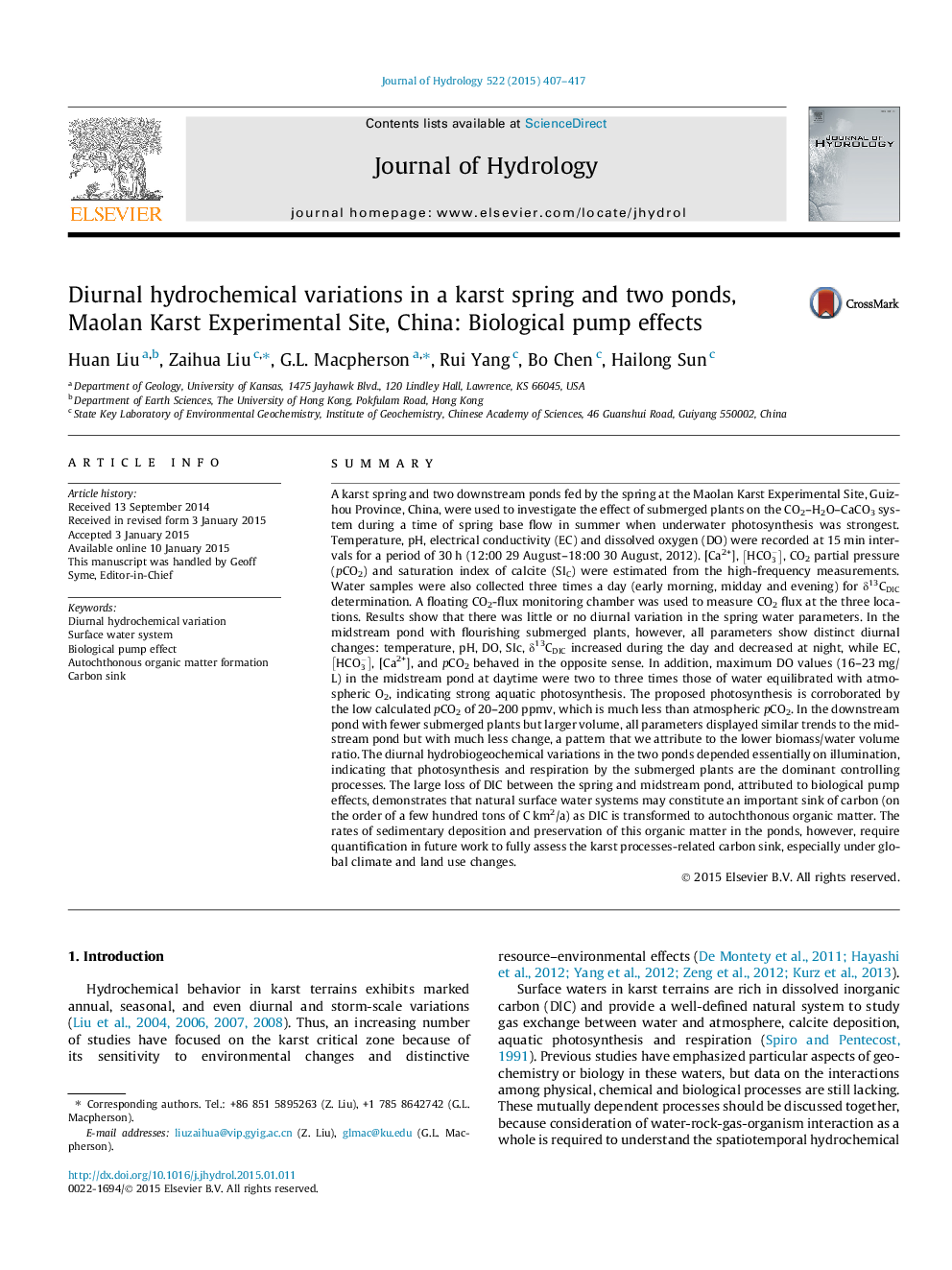| کد مقاله | کد نشریه | سال انتشار | مقاله انگلیسی | نسخه تمام متن |
|---|---|---|---|---|
| 6411331 | 1629928 | 2015 | 11 صفحه PDF | دانلود رایگان |

- There are almost no diurnal hydrochemical variations in the spring waters.
- In the surface waters, however, all parameters show distinct diurnal changes.
- Hydrochemistry of land surface waters may be strongly modified by submerged photosynthesis.
- Land surface water systems may constitute an important sink of carbon.
SummaryA karst spring and two downstream ponds fed by the spring at the Maolan Karst Experimental Site, Guizhou Province, China, were used to investigate the effect of submerged plants on the CO2-H2O-CaCO3 system during a time of spring base flow in summer when underwater photosynthesis was strongest. Temperature, pH, electrical conductivity (EC) and dissolved oxygen (DO) were recorded at 15 min intervals for a period of 30 h (12:00 29 August-18:00 30 August, 2012). [Ca2+], HCO3-, CO2 partial pressure (pCO2) and saturation index of calcite (SIC) were estimated from the high-frequency measurements. Water samples were also collected three times a day (early morning, midday and evening) for δ13CDIC determination. A floating CO2-flux monitoring chamber was used to measure CO2 flux at the three locations. Results show that there was little or no diurnal variation in the spring water parameters. In the midstream pond with flourishing submerged plants, however, all parameters show distinct diurnal changes: temperature, pH, DO, SIc, δ13CDIC increased during the day and decreased at night, while EC, HCO3-, [Ca2+], and pCO2 behaved in the opposite sense. In addition, maximum DO values (16-23 mg/L) in the midstream pond at daytime were two to three times those of water equilibrated with atmospheric O2, indicating strong aquatic photosynthesis. The proposed photosynthesis is corroborated by the low calculated pCO2 of 20-200 ppmv, which is much less than atmospheric pCO2. In the downstream pond with fewer submerged plants but larger volume, all parameters displayed similar trends to the midstream pond but with much less change, a pattern that we attribute to the lower biomass/water volume ratio. The diurnal hydrobiogeochemical variations in the two ponds depended essentially on illumination, indicating that photosynthesis and respiration by the submerged plants are the dominant controlling processes. The large loss of DIC between the spring and midstream pond, attributed to biological pump effects, demonstrates that natural surface water systems may constitute an important sink of carbon (on the order of a few hundred tons of C km2/a) as DIC is transformed to autochthonous organic matter. The rates of sedimentary deposition and preservation of this organic matter in the ponds, however, require quantification in future work to fully assess the karst processes-related carbon sink, especially under global climate and land use changes.
Journal: Journal of Hydrology - Volume 522, March 2015, Pages 407-417